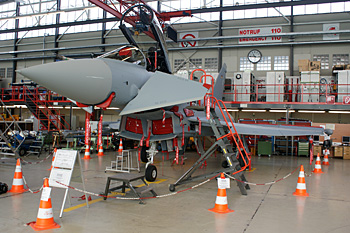INDIAN ARMED FORCES CHIEFS ON OUR RELENTLESS AND FOCUSED PUBLISHING EFFORTS

The insightful articles, inspiring narrations and analytical perspectives presented by the Editorial Team, establish an alluring connect with the reader. My compliments and best wishes to SP Guide Publications.

"Over the past 60 years, the growth of SP Guide Publications has mirrored the rising stature of Indian Navy. Its well-researched and informative magazines on Defence and Aerospace sector have served to shape an educated opinion of our military personnel, policy makers and the public alike. I wish SP's Publication team continued success, fair winds and following seas in all future endeavour!"

Since, its inception in 1964, SP Guide Publications has consistently demonstrated commitment to high-quality journalism in the aerospace and defence sectors, earning a well-deserved reputation as Asia's largest media house in this domain. I wish SP Guide Publications continued success in its pursuit of excellence.
- Indian Air Force Aims for Full Indigenous Inventory by 2047 — Air Chief Marshal A.P. Singh
- General Upendra Dwivedi takes over as the Chief of the Army Staff
- Rajnath Singh assumes charge as Defence Minister for the second consecutive term
- Admiral Dinesh K. Tripathi assumes Command of the Indian Navy as 26th Chief of the Naval Staff
- Prime Minister witnesses 'Bharat Shakti' – a Tri-Services Firing and Manoeuvre Exercise in Pokhran, Rajasthan
Outlook for EADS in India post MMRCA loss
By SP's Special Correspondent |
|
| Eurofighter under construction at Manching, Germany |
As the most basic level, the Rafale's victory isn't a total financial loss for EADS -- in fact quite the contrary. It is well known in the aerospace industry, but little known otherwise that EADS happens to own just over 46 per cent equity in Dassault Aviation, a stake just a few notches below the promoter's own controlling that comes up just above the 50 per cent. In other words, EADS benefits almost equally in terms of dividends from the sale of the Rafale to India. To be sure, that's cold comfort for EADS, which had made it clear that it was backing the Eurofighter campaign alone, and had nothing to do with the Rafale pitch. Strategic equity holdings between rival defence firms is not uncommon, and while they compete fiercely in the world market, EADS and Dassault function with huge and very lucrative synergies. Notably, the weapons package on the Rafale is comprised almost entirely of munitions, bombs and missiles manufactured by MBDA, a subsidiary of EADS.
But the loss is a psychological blow to EADS, which regards the news as the third in a hat trick of disappointments it has had to face in India over the last few years. In December 2007, the Indian effort to acquire 197 light helicopters was aborted at the final stage, at which time EADS subsidiary Eurocopter's AS550 C3 Fennec helicopter reportedly stood to win the billion-dollar deal. The programme was re-tendered after complaints that EADS had fielded a civil version of their helicopter for field evaluation trials. Two years later, in January 2010, EADS suffered another major blow when the government failed to get a a deal award to EADS for six mid-air Airbus A330 MRTT refuelling tankers through the Finance Ministry. Despite a powerful push by the armed forces on both occasions, the deals represented significant major setbacks for the company in India. EADS is, of course, competing in the rentendered iterations of both programmes, with results likely this year. But it was the MMRCA programme that, obviously, had its biggest backing. Having the Typhoon downselected in April 2011 for the MMRCA was, therefore, a huge boost. In fact, just days after the downselect, Eurofighter pavilions and booths at aerospace and defence shows the world over had "MMRCA Shortlist" painted on them. Making the semi-final was in itself a victory for the company because of what it said about the aircraft. Losing to Dassault, therefore, has been the company's biggest shock so far in India.
It should be said that apart from EADS, the MMRCA loss is also a blow to European engine consortium Eurojet. As a four-company partnership involving Rolls-Royce, MTU Aero, Avio and ITP, the consortium loses out to France's Snecma, that powers the Rafale with twin M88 turbofans. Doing business in India, for Eurojet as an entity, is a difficult proposition now since its only other possible inroad -- to power the uprated LCA Tejas Mk.2 -- was won by GE with its F414 engine in September 2010 in another shock reversal.
Unlike Eurojet, however, despite these significant setbacks, EADS has a lot of prospective business to look forward to, and is already engaged in meaningful consulting contracts in indigenous programmes. In the last few years, EADS has mopped up lucrative technical consultancies on both variants of the LCA Tejas and the DRDO's AEW&C programme based on the ERJ 145 business jet. The company is steeped in helping all three programmes optimize, speed up and stay on course, prestigious duties by any account. Apart from the tanker and light utility helicopter competitions, EADS products are in various stages of consideration by the Indian military, both in the short and medium term.
The EADS CASA C-295MPA is expected to be offered to meet the Indian Navy's medium range maritime reconnaissance (MRMR) requirement.
EADS has expressed interest in briefing India in detail about the Airbus A400M and will look to find a niche for the aircraft in Indian environment.
EADS subsidiary Eurocopter is pitching to supply AS565 Panther choppers to the Indian Coastguard and is also looking to partner HAL with the EC 725 for the concept Indian Multirole Helicopter (IMRH) programme.
MBDA's ASRAAM is currently under consideration to arm IAF Jaguar deep penetration strike aircraft. MBDA is also understood to be in the final stages of getting the long-delayed short-range surface-to-air missile (SR-SAM) joint development effort with DRDO off the ground, though work on the system has already made considerable progress. Apart from these, MBDA offers several other weapons to India, notably the MBDA Scalp naval air-launched cruise missile, not to mention virtually the entire weapons suite for the Rafale along with rival Sagem.
It must be said that this is prospective business only limited to the Indian armed forces. EADS has several opportunities it is looking at on the civil side as well in terms of cyber security, border defences, civil aviation, battlefield technology, C4I systems and network centric infrastructure both for the civil and military applications.





